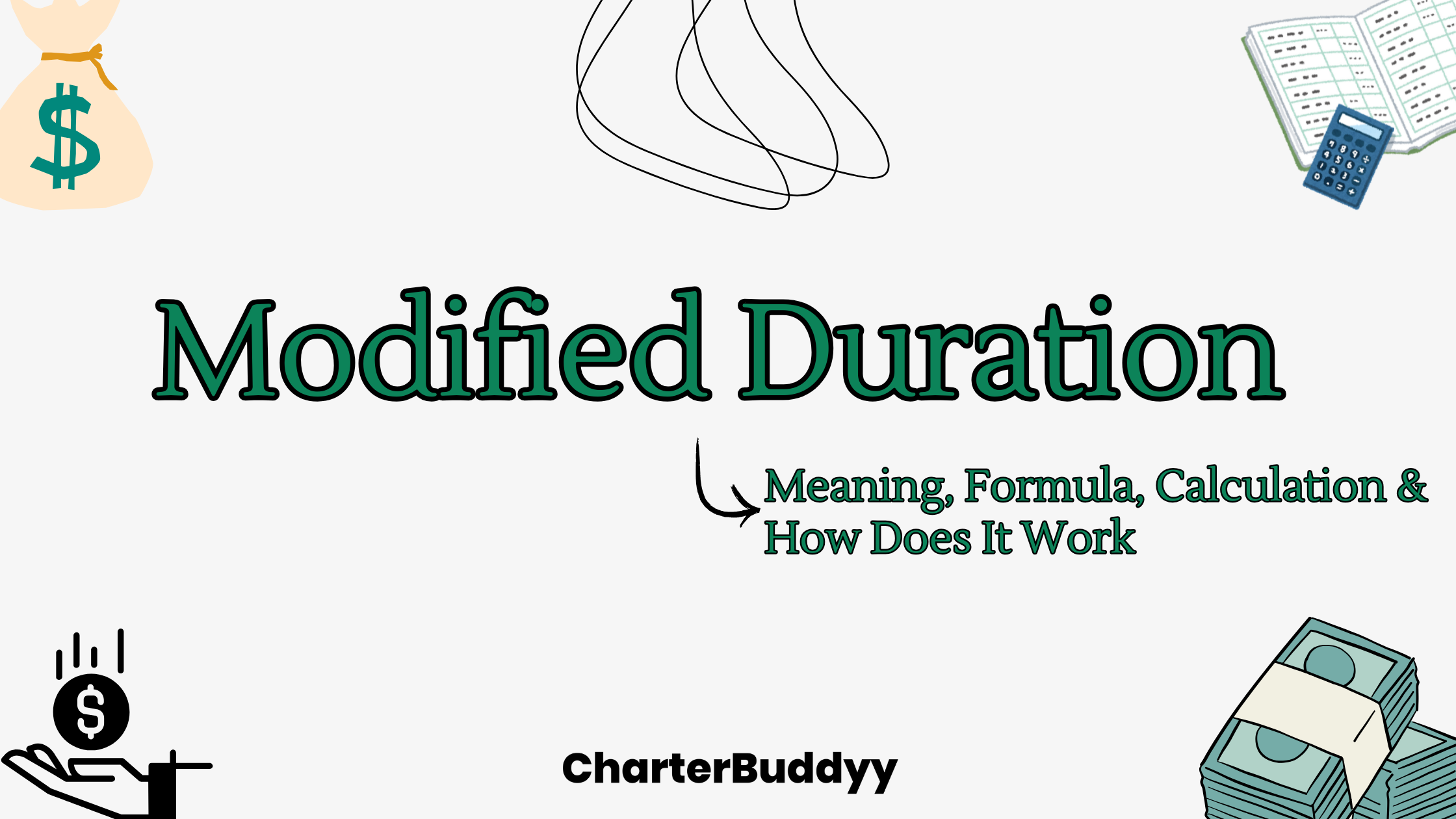Modified Duration- Meaning, Formula, Calculation & How Does It Work
Home » Modified Duration- Meaning, Formula, Calculation & How Does It Work

What Is Modified Duration?
Modified duration is a measure of a bond's price sensitivity to changes in interest rates. It estimates the percentage change in a bond's price for a 1% change in interest rates.
Unlike Macaulay duration, which is expressed in years, modified duration directly reflects the bond's price volatility in %. We have shown an example below.
Modified duration is crucial for investors and portfolio managers as it helps assess interest rate risk in fixed-income securities. A higher modified duration indicates greater price sensitivity to interest rate changes, while a lower modified duration suggests less sensitivity.
How to Calculate Modified Duration
The formula to calculate modified duration is:
Modified Duration = Macaulay Duration / (1 + YTM / n)
Where:
- Macaulay Duration = Weighted average time until cash flows are received
- YTM = Yield to Maturity (expressed as a decimal)
- n = Number of coupon periods per year
For example, if a bond has a Macaulay duration of 5 years, a YTM of 6% (0.06), and pays semi-annual coupons (n = 2), the modified duration would be:
Modified Duration = 5 / (1 + 0.06 / 2) = 5 / 1.03 = 4.854%
This means the bond’s price would decrease by approximately 4.85% for every 1% increase in interest rates.
How Does Modified Duration Work?
Modified duration helps investors predict the impact of interest rate changes on bond prices. Here's how:
- Interest Rate Rise: Bond prices decrease. Modified duration indicates the estimated percentage drop.
- Interest Rate Fall: Bond prices increase. Modified duration predicts the percentage gain.
For example, if a bond has a modified duration of 6, a 1% rise in interest rates would result in roughly a 6% decline in its price. Conversely, a 1% drop in rates would increase its price by about 6%.
Factors Affecting Modified Duration
Several factors influence a bond's modified duration:
- Time to Maturity: Longer maturity periods typically result in higher modified duration, indicating greater sensitivity to interest rate changes.
- Coupon Rate: Bonds with lower coupon rates tend to have higher modified duration since a larger portion of cash flows is received later.
- Yield to Maturity (YTM): Higher YTM reduces modified duration since the discounting factor is greater.
- Payment Frequency: Bonds with more frequent coupon payments have lower modified duration since cash flows are received sooner.
Modified Duration v/s Macaulay Duration
| Aspect | Modified Duration | Macaulay Duration |
|---|---|---|
| Definition | Measures price sensitivity to interest rate changes. | Measures the weighted average time until cash flows are received. |
| Expressed In | Directly in percentage change per 1% interest rate shift. | Expressed in years. |
| Calculation | Divide Macaulay duration by (1 + YTM / n). | Calculates the weighted average time to receive cash flows. |
| Use Case | Preferred by investors for estimating price volatility. | More commonly used to determine a bond's duration in time terms. |
In practice, modified duration is more practical for assessing risk, while Macaulay duration is useful for understanding cash flow timing.
Conclusion
Modified duration is an essential concept in fixed-income investing, providing a clear measure of a bond's sensitivity to interest rate changes.
By understanding the relationship between modified and Macaulay duration, investors can make informed decisions to manage interest rate risk effectively.
For CFA candidates and finance enthusiasts, understanding this concept is key to excelling in fixed-income analysis.
Table of Contents
- What Is Modified Duration?
- How to Calculate Modified Duration
- How Does Modified Duration Work?
- Factors Affecting Modified Duration
- Modified Duration v/s Macaulay Duration
- Conclusion

